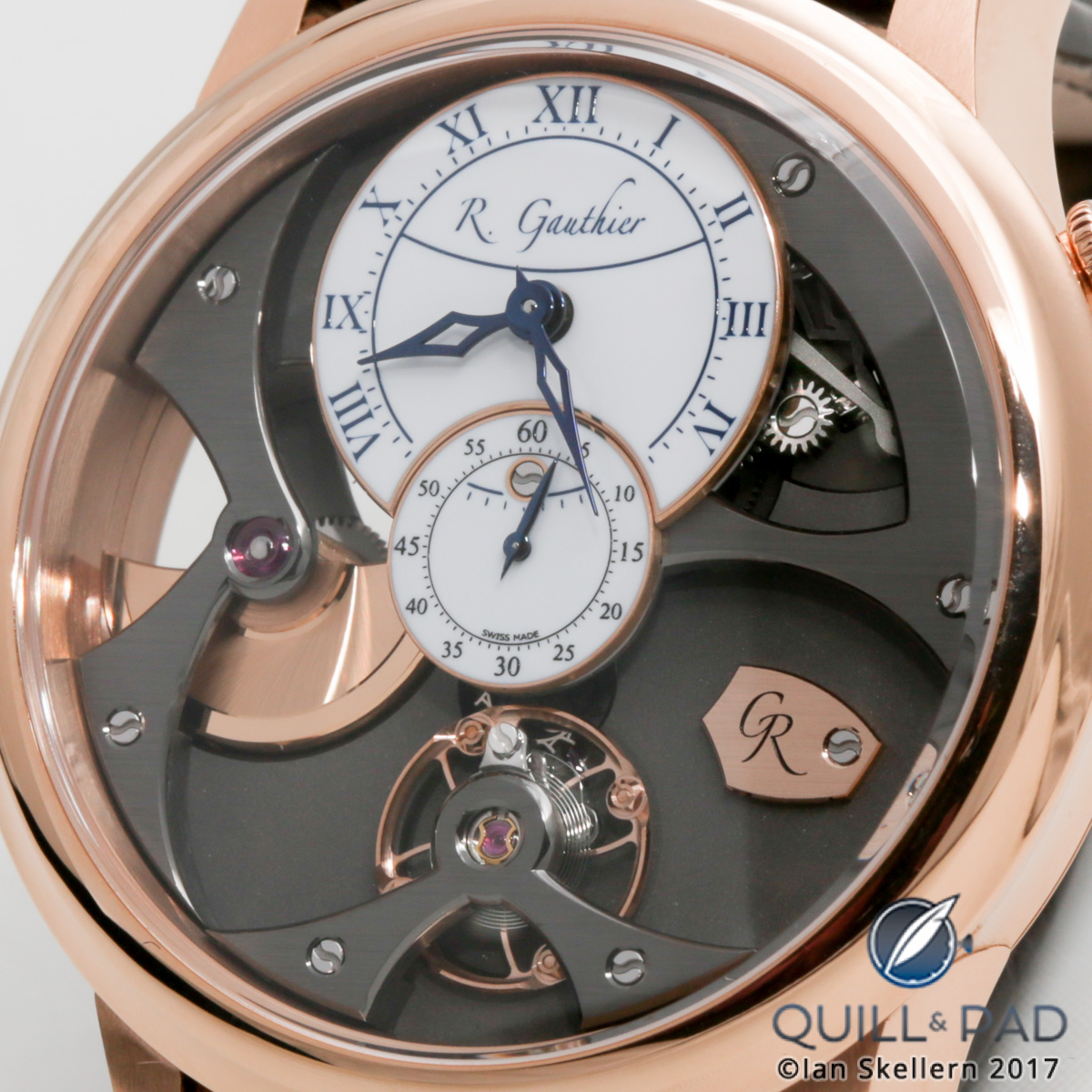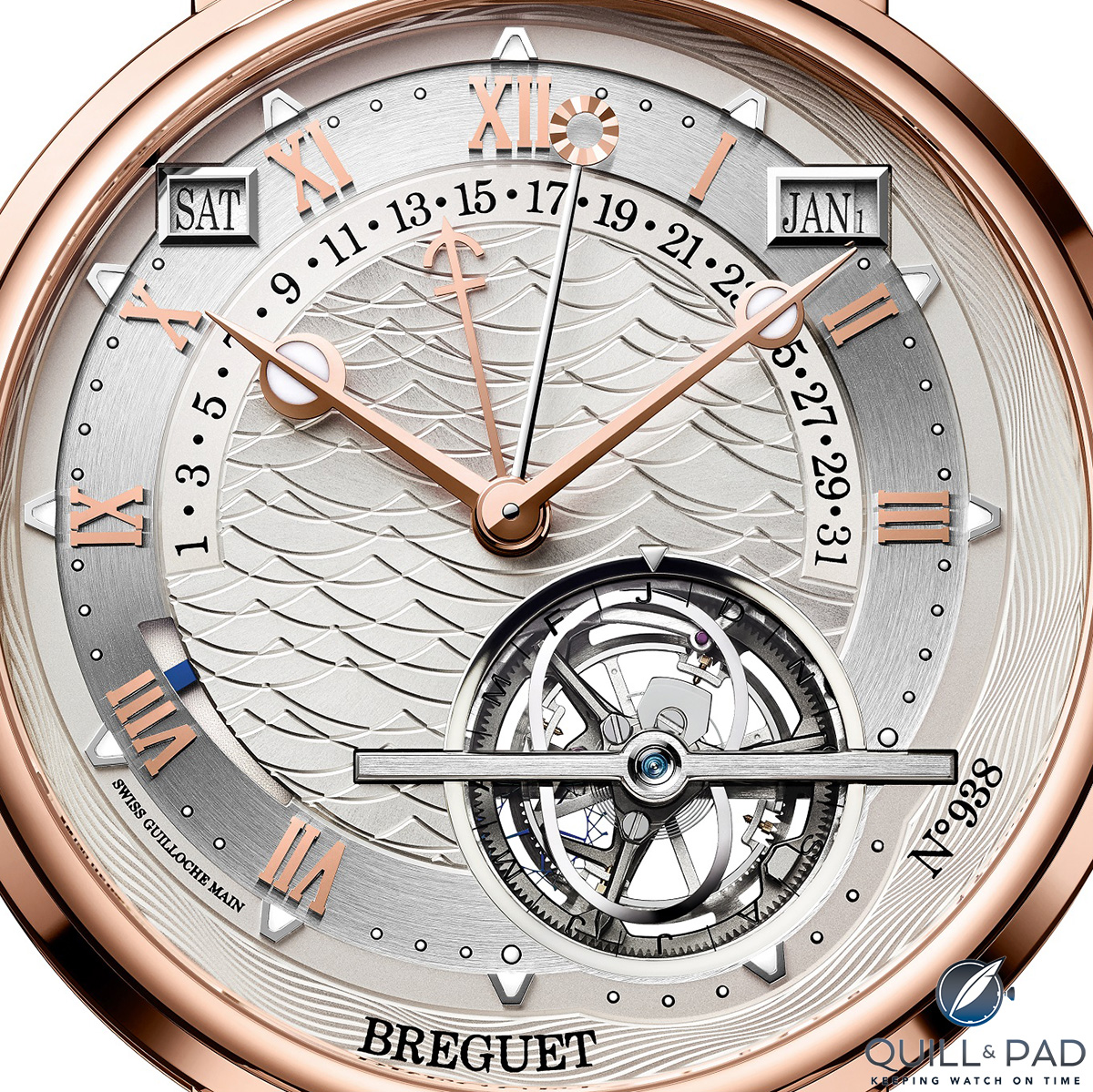
The universe, as far as we know, is only one of two constants that exist.
The other?
Change.
The universe and everything in it changes, by a little or perhaps a lot, but nothing stays the same.
Quite possibly the most misunderstood aspect of science and the universe is how ever-changing everything is, including time. In fact, time – or at least what we call time – has never been a constant.
Our version of time is based on measuring periods, from the beginning to end of anything we think is constant and repeating.
This is why the easiest measure of time has been a day, from noon to noon, based on the sun’s position in the sky. And it wasn’t until we were able to measure that period somewhat accurately that we realized it wasn’t consistent at all.
And when we could finally measure the length of a day mechanically with clocks down to the second, we discovered that during the course of a year, a day – the time from noon to noon – varied as much as 16 minutes from average.
That last word is actually the most important word in the study of how we define time: average.
When mathematicians and astronomers make calculations based on observations and measurements, there are always variations based on numerous factors. The result of those variations is that many calculations must be made and finally reduced to an average.
This is how we came up with the mean (a common type of mathematical average) solar time of 24 hours in a day comprising 60 minutes in an hour and 60 seconds in a minute; the math was clean.
However, the truth is usually messy and so is the time as described by the journey of the sun across the sky.
Solar time (the time of day based on the position of the sun) is difficult to rely on as the length of a solar day varies by differing amounts throughout the year.
This is something that provided much consternation early on in the development of clocks, as to keep true solar time clocks would need to be adjusted daily throughout the year to match the noon sun.
It was finally decided that civil time should be based solely on mean solar time (the even division of 24 hours), eliminating the need to be tied to the sun.
Of course, true solar time is still immensely useful when working with astronomical measurements and calculations, but the general population works better when the days are a fixed length of time.
Still, the fascination with true solar time is not lost on those whose job it is to measure time as precisely as possible, and so indications of true solar time relevant to mean solar time have been around about as long as precise timepieces. This indication is known as the equation of time.
The equation of time indication displays the amount that true solar time is ahead or behind civil time. Abraham-Louis Breguet was (of course) an early master of the mechanism, making five watches containing the indication, and so it follows that modern-day Breguet is interested in carrying the torch of the equation of time.

Breguet Marine Équation Marchante tourbillon perpetual calendar
At Baselworld 2017 Breguet presented the Marine Équation Marchante Reference 5887, a fantastic implementation of a running equation of time combined with a perpetual calendar and the company’s signature tourbillon, making for a highly impressive mechanical watch.
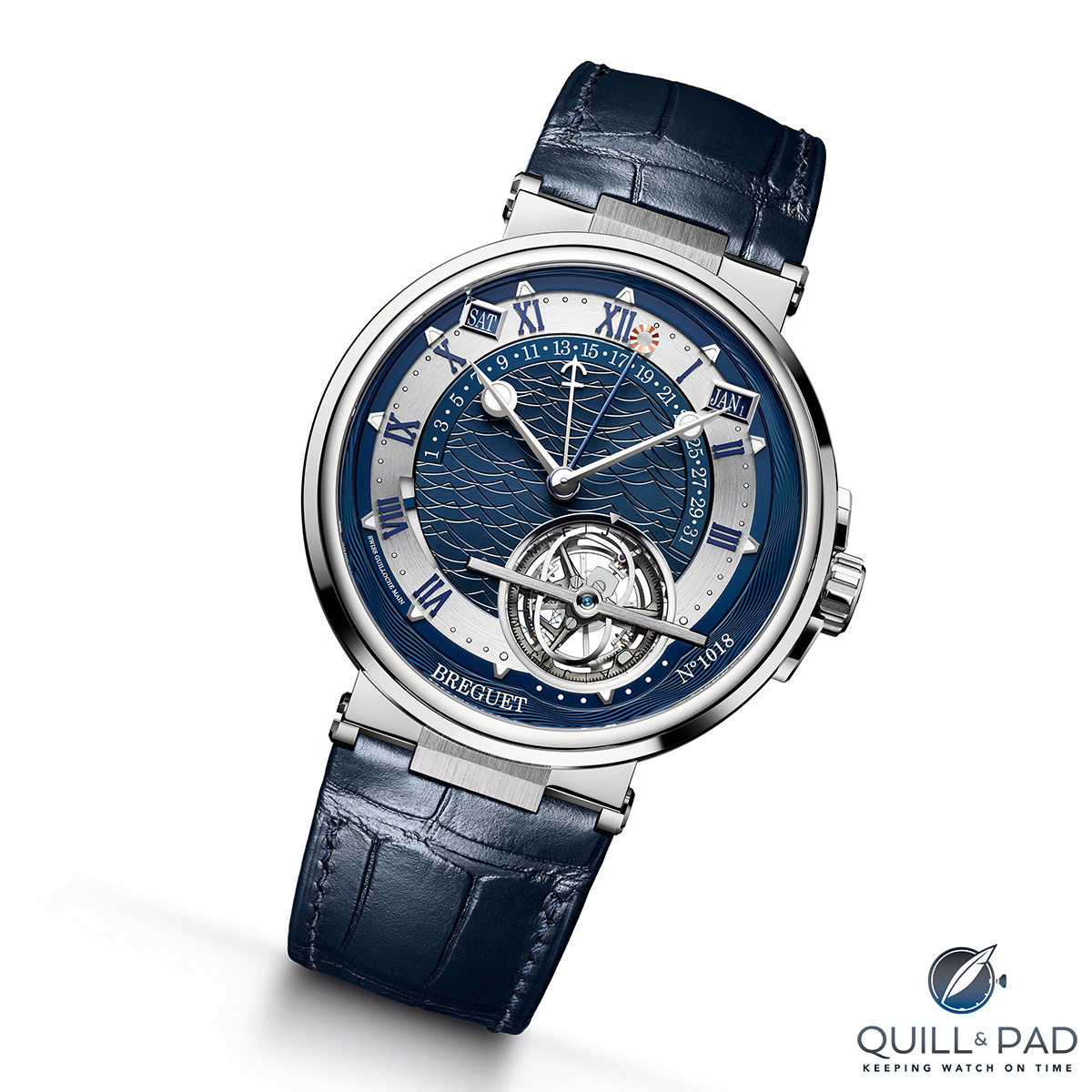
Breguet Marine Équation Marchante tourbillon perpetual calendar
How do you get true solar time?
The equation of time is built into the perpetual calendar mechanism, as is usually the case, because to display true solar time the movement must know exactly what day of the year it is. Unlike complications displaying the date or an annual calendar, a perpetual calendar keeps track of the lengths of all months including February, and usually even February in leap years.
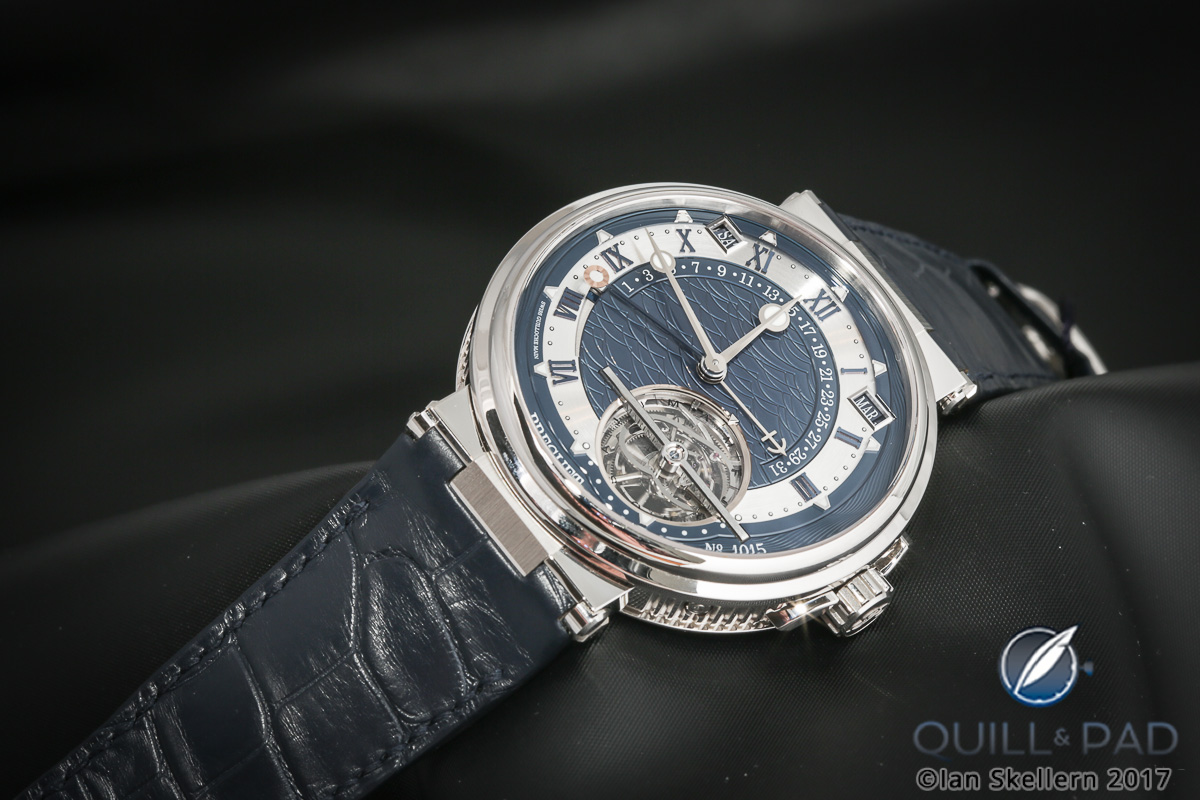
Breguet Marine Équation Marchante Reference 5887 in platinum
The variation of true solar time was historically calculated daily at noon to determine how far ahead or behind the meridian the sun was. The largest deviations can be up to 16 minutes behind mean solar time (on November 3) and 14 minutes ahead (on February 12). Solar time and mean solar time are only synchronized on four days of the year.
Each day of the year has a value ahead or behind mean solar time that can be graphed as a wonky sine curve. The curve isn’t symmetrical either due to variations in the earth’s speed of rotation, orbital speed, axis of tilt, and other factors. All of these combined create the daily variation of true solar time throughout the year – and make it quite the problem to indicate.
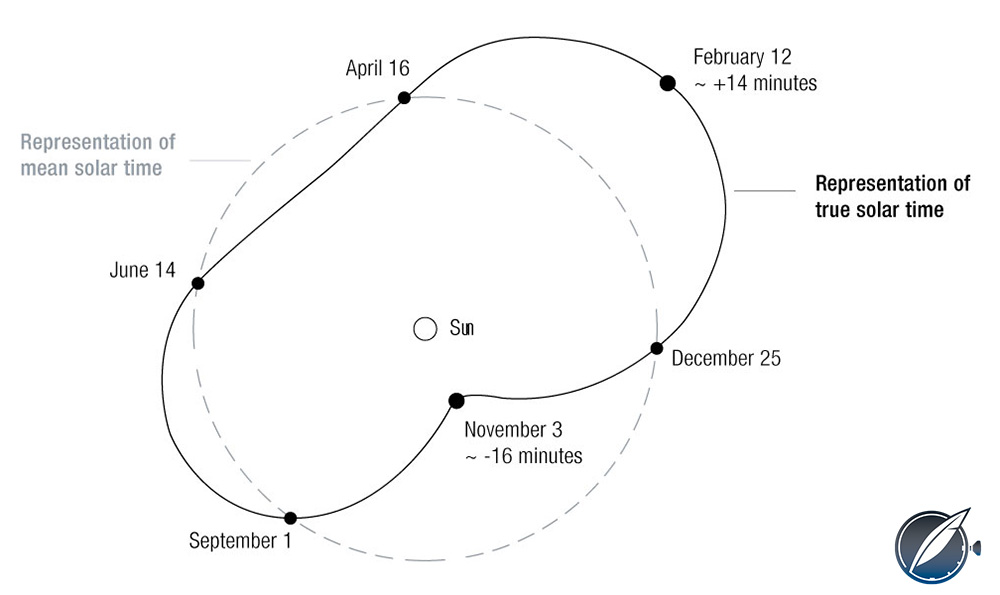
Shape of the equation of time track of the earth orbiting the sun over the course of a year compared to the perfect circle of civil time as measured by clocks
The graph of the values are plotted as deviations from mean solar time, and when mean solar time is plotted in a circle the resulting true solar time values create a unique shape similar to a lopsided bean.
This bean shape is the equation of time, and with the appropriate mechanics can be translated into a running indication of the equation of time.
The Breguet Marine Équation Marchante Reference 5887 goes one step better and displays the equation of time from a central hand relative to the minute hand so that it is visually easy to understand where the sun is in relation to where mean time is.
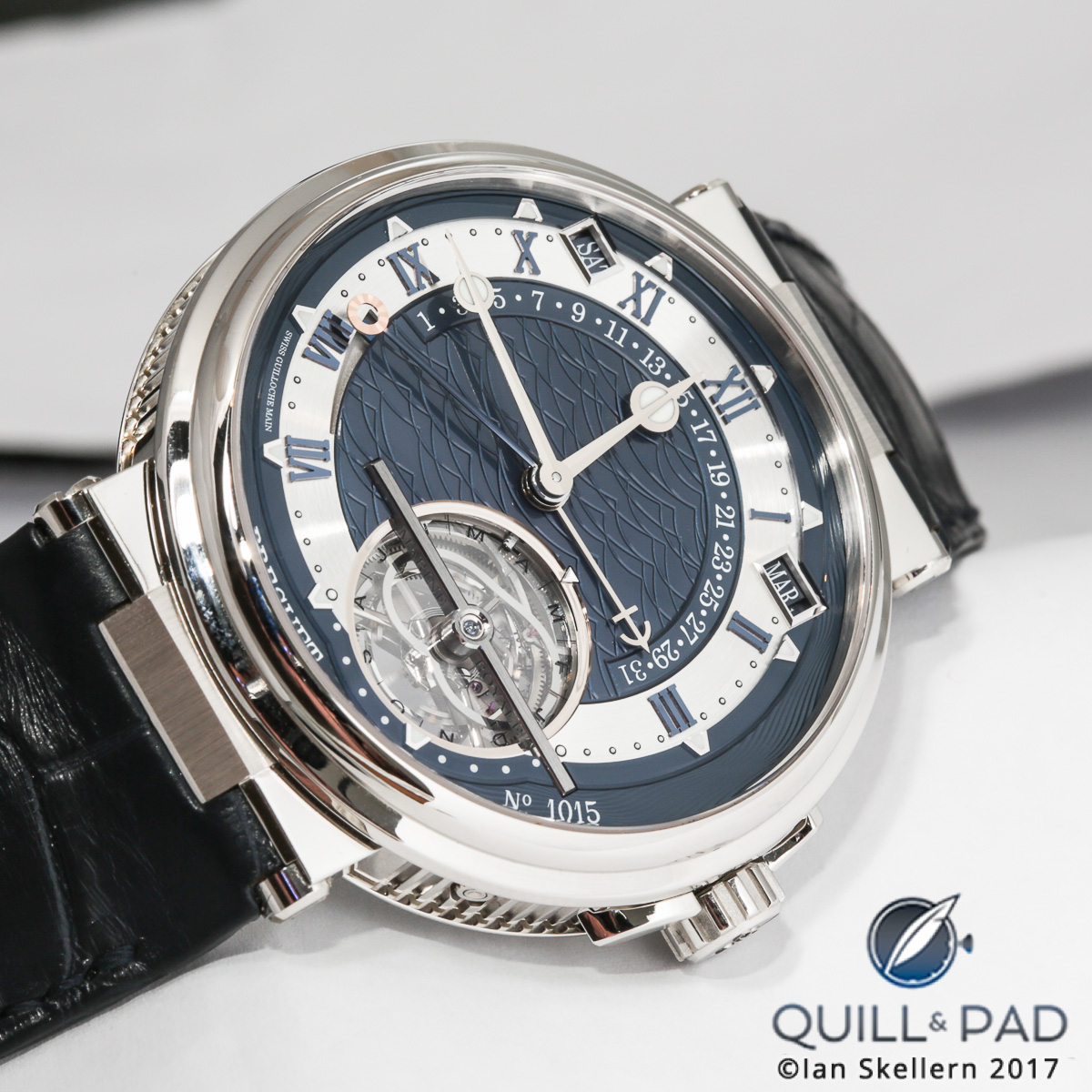
Breguet Marine Équation Marchante Reference 5887 in platinum
Most equation of time indications simply have a plus/minus scale and a hand that rides along the equation of time cam profile via a lever and finger and pointing to a number. This requires you to make a calculation in your head to determine what it actually means.
This is still really cool, but visually it lacks cohesiveness.
Mechanics of the Breguet Marine Équation Marchante
In the Marine Équation Marchante, the equation of time cam has been retooled and re-imagined in a whole new way.
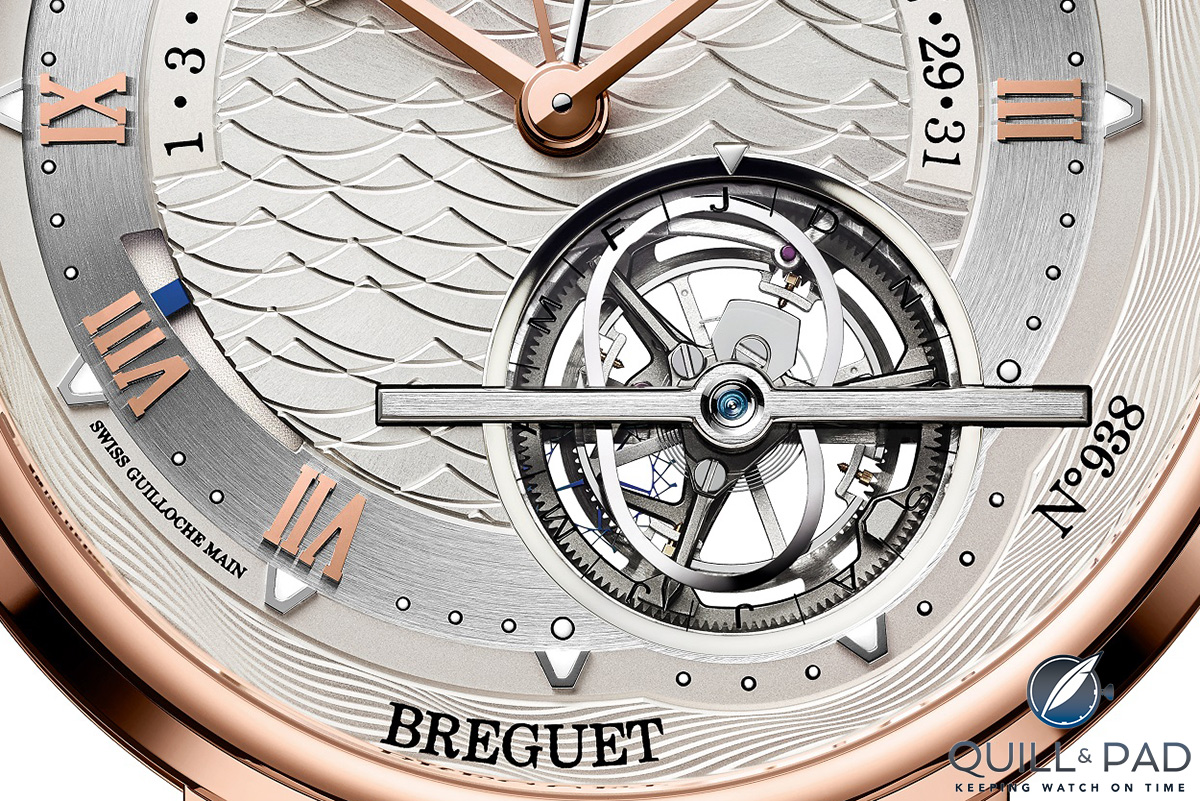
Peanut-shaped equation of time track over the tourbillon on the Breguet Marine Équation Marchante with the small ruby tracking pin just visible at 1 o’clock inside the track
First, the perpetual calendar uses a sapphire crystal disk to display the months of the year; it rotates one position each day, making a full rotation every 365 days (366 during a leap year).
But more impressively, the equation of time cam is “grown,” using LIGA technology, directly onto the rear of the sapphire crystal month disk. Grown using a nickel-phosphorus alloy, its path is perfectly visible through the sapphire crystal disk.
This method of fabrication also allowed Breguet to change how the mechanism measured the time. Usually the cam follower rides on the outside of a solid cam profile with a pointed finger tracing a path.
With the grown profile on the sapphire crystal, the cam could follow the inside of the path (the path was adjusted to account for this offset) using a ruby roller smoothly gliding around the inside of the profile instead of a finger.
The cam follower is on the end of a toothed rack that meshes with a planetary differential. This differential has five “layers” of wheels that take the small adjustments of the equation of time profile and offset the indication hand by the appropriate amount while letting it continuously rotate with the regular minute hand that indicates mean solar time.
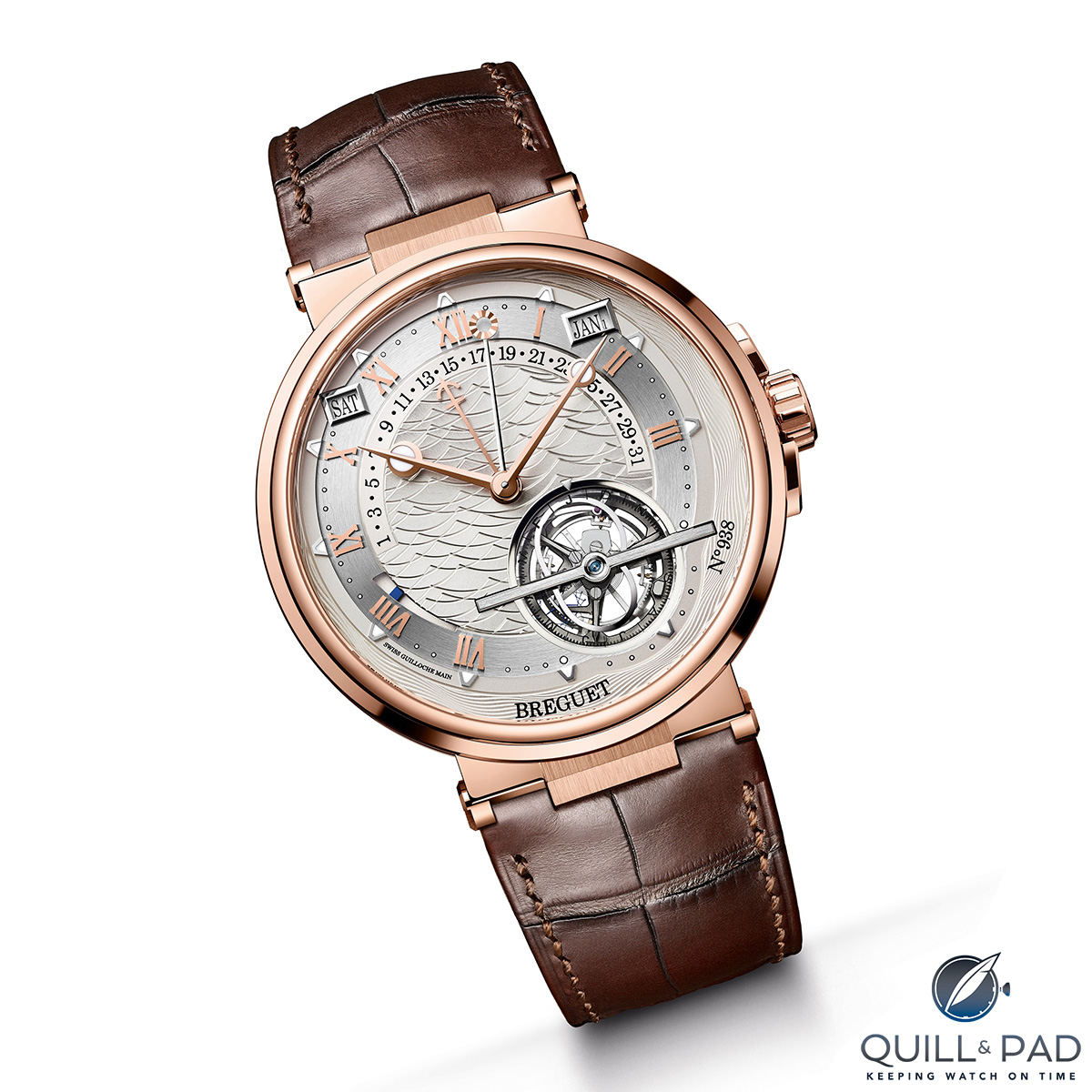
Breguet Marine Équation Marchante Reference 5887 in pink gold
The equation of time hand adjusts slightly every night when the perpetual calendar updates to the new day. The differential is the key to allowing the hand to continuously revolve by letting the planetary gears rotate at different rates depending on where the input is coming from.
Not just a one-trick pony
It is an amazingly technical solution implemented in a way that is as traditional as it is modern.
More impressively, the equation of time cam and sapphire crystal month disk are mounted coaxially to the tourbillon underneath, juxtaposing the long term with the short term.
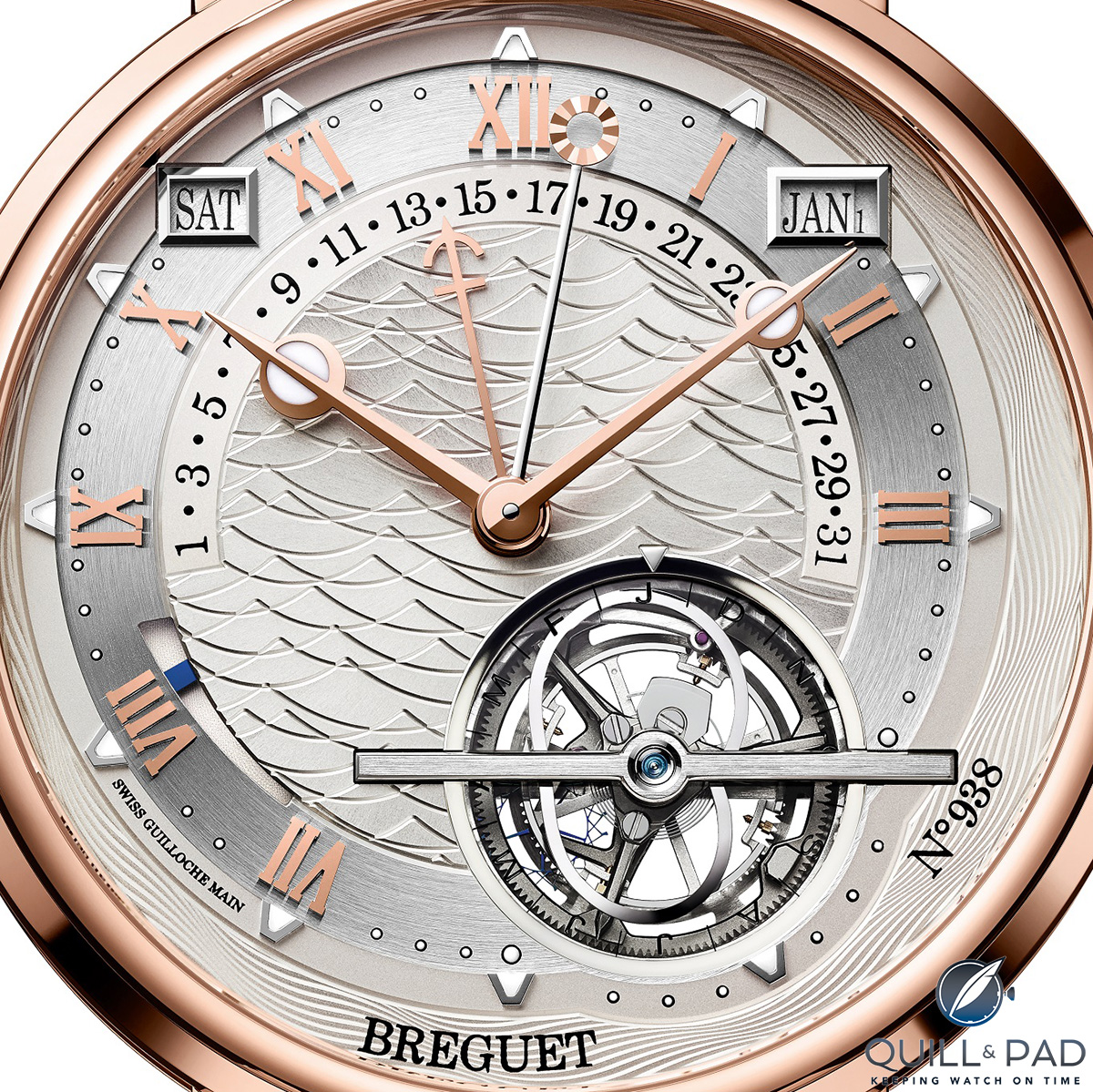
Dial of the Breguet Marine Équation Marchante Reference 5887
The tourbillon is technically awesome as well: the cage is ultra-light titanium and the hairspring is silicon, plus the escapement features a silicon escape wheel and a pallet lever. The tourbillon cage pivot extends through the sapphire crystal month disk into a square-jeweled bridge spanning the large dial opening.
Moreover, the date indication is a retrograde hand that also rotates centrally with the minute and equation of time hands, adding to the complexity of the entire mechanism.
The day of the week and second month indications are mirrored on the top of the dial at 10:30 and 1:30 in small windows. Finally, on the lower left between 7:00 and 8:30 is a subtle power reserve indication, rounding out the complications of the 80-hour automatic 581DR caliber.
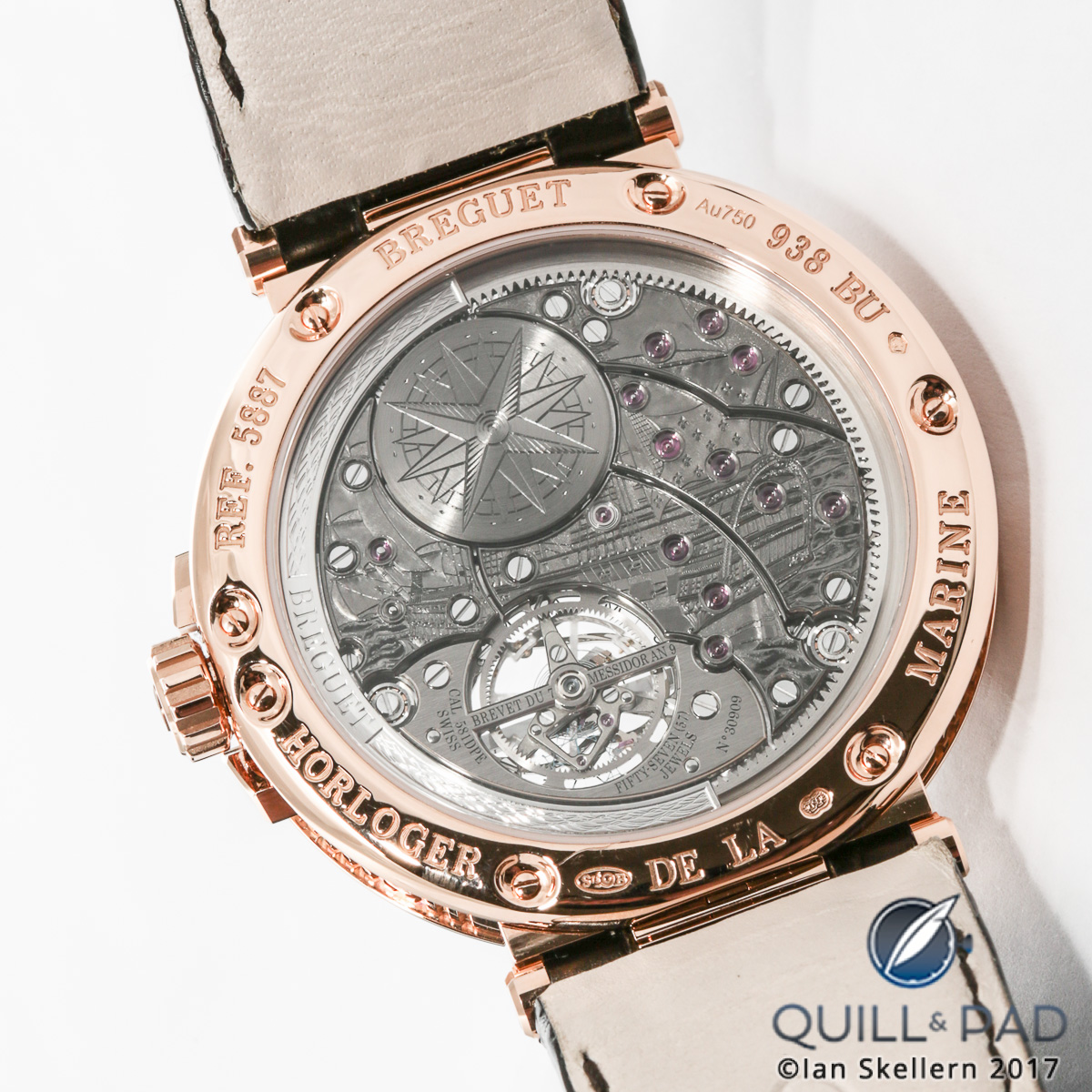
Movement side of the Breguet Marine Équation Marchante Reference 5887
The self-winding mechanism is another plus as it comprises a super-slim peripheral rotor sliding on precision ball bearings that allow full view of the incredible movement. In fact, the mainspring barrel and power reserve mechanism also utilize ball bearings for low-friction operation, pushing the movement capabilities further than Abraham-Louis Breguet could have imagined.
Or could he have? You never know with that horological genius.
If all of that wasn’t enough, the dial is artfully decorated with a new wave guilloche pattern created specifically for this dial and strong applied Roman numerals in blued steel.
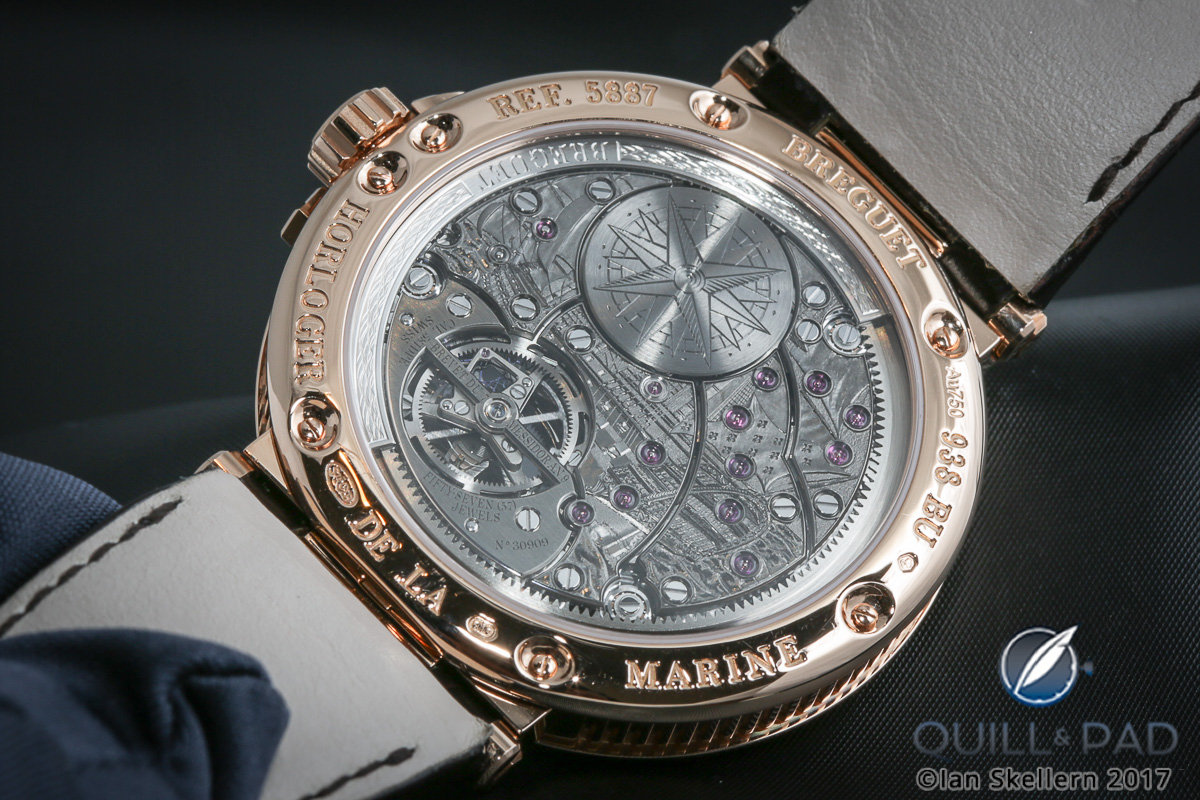
View through the display back to engraved movement of the Breguet Marine Équation Marchante Reference 5887
And, yet, the dial remains tame in comparison with the movement bridges seen on the rear, which have been completely micro-engraved to display the Royal Louis, a ship of the French Royal Navy. This addition is an ode to Abraham-Louis Breguet’s appointment as chronometer maker for the French Royal Navy.
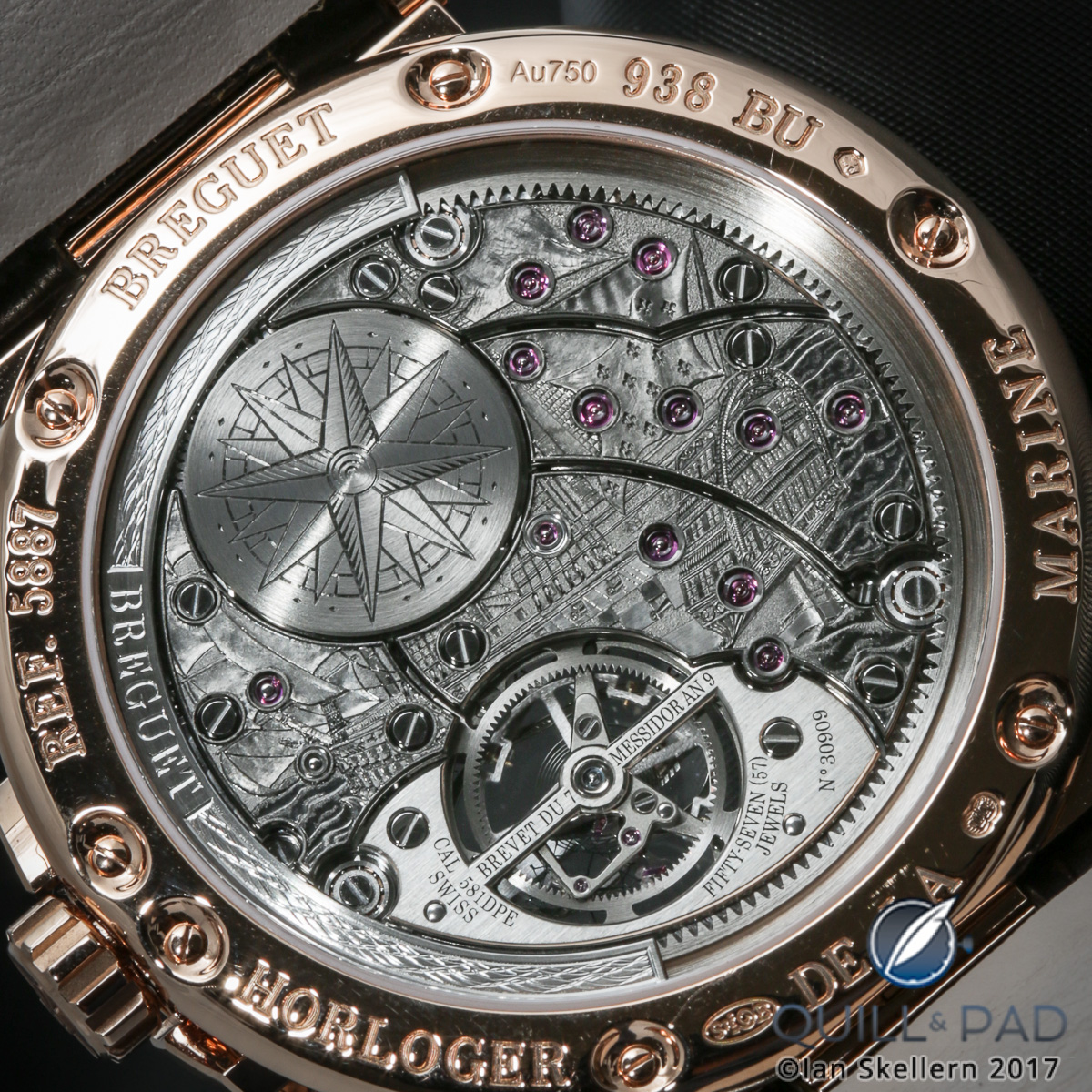
View through the display back to the engraved movement of the Breguet Marine Équation Marchante Reference 5887
The entire presentation is a reflection on the history of Breguet and the talent the brand contains within in its ranks.
The movement architecture is mouthwatering for a movement nerd like myself, and getting to play with a desktop-size version of the equation of time mechanism really made this watch come to life for me.
I was truly excited to learn about the technical details and see firsthand the craftsmanship that went into every piece of the Marine Équation Marchante Reference 5887.
Breguet has always been very strong with research and development while staying very true to its roots. This piece is no different, proving why Breguet stands among the best in the industry.
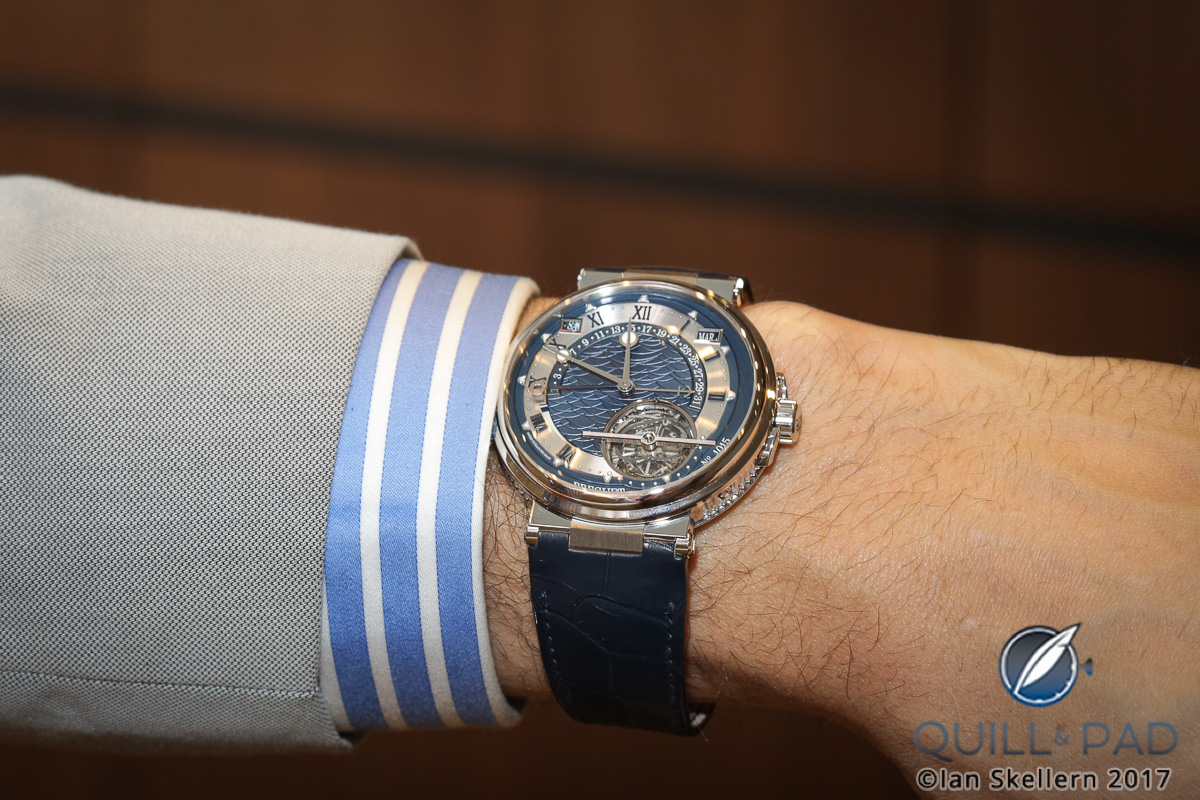
Breguet Marine Équation Marchante Reference 5887 in platinum on the wrist
Now all I need to do is figure out how to get my hands on one of these again for a *cough* long-term *cough, cough* test drive. Until then, the breakdown!
- Wowza Factor * 9.1 The equation of time mechanism is awesome and the implementation of the entire perpetual calendar is top notch!
- Late Night Lust Appeal * 94.5 » 926.728 m/s2 I’m not even going to pretend that I haven’t lusted after this one since Baselworld, it is too fantastic!
- M.G.R. * 69.8 This is a pretty geeky movement with just a tourbillon and perpetual calendar, but adding that new equation of time with a running indication and differential? Whoa!
- Added-Functionitis * Severe Perpetual calendar with dual month indications and retrograde date, running equation of time, power reserve indicator. Yeah, you definitely are going to need prescription strength Gotta-HAVE-That cream for the timely mechanical swelling!
- Ouch Outline * 10.9 Opening a brand-new pocket knife and immediately cutting your finger! The warning on the packaging ain’t lying: that knife is sharp. But, hey, sometimes you get excited. I would let it happen again if it meant getting one of these on my wrist!
- Mermaid Moment * One Year. Honestly I absolutely adored this from the moment I saw it. But the long-term love that comes from deep appreciation really builds during that first year as you watch the running equation of time creep forwards and backwards. And by the end of the year you will have the entire ceremony planned and be ready to get hitched!
- Awesome Total * 761 Add the hours of power reserve (80) to the depth of water resistance in meters (100) and then add the caliber number (581) for an equation of awesome total!
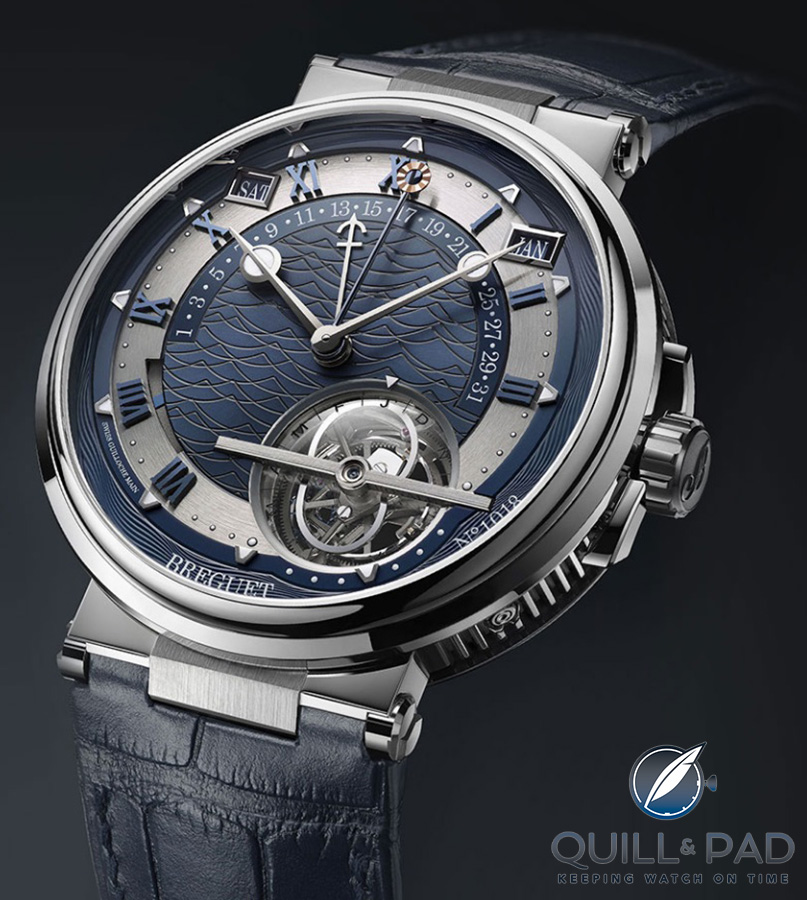
Breguet Marine Équation Marchante Reference 5887 in platinum
For more information, please visit https://marine.breguet.com/BW_5887.
Quick Facts Breguet Marine Équation Marchante Reference 5887
Case: 43.9 mm, platinum or pink gold
Movement: automatic Caliber 581DPE with 60-second tourbillon
Functions: hours, minutes; running equation of time, perpetual calendar, power reserve indication
Price: $230,400 in platinum, $215,000 in pink gold

